2018-11-22 - Nº 186

Editorial
Esta é a Newsletter Nº 186 que se apresenta com o mesmo formato que as anteriores. Se gostar da Newsletter partilhe-a!
Todas as Newsletters encontram-se indexadas no link.
Esta Newsletter tem os seguintes tópicos:
Faz hoje anos que nascia, em 1904, Louis Néel. Este físico francês partilhou (com o astrofísico sueco Hannes Alfvén) o Prémio Nobel de Física em 1970 pelos seus estudos pioneiros sobre as propriedades magnéticas dos sólidos. As suas contribuições para a física de estado sólido encontraram inúmeras aplicações úteis, particularmente no desenvolvimento de unidades melhoradas das memórias de computador. Por volta de 1930 ele sugeriu que uma nova forma de comportamento magnético poderia existir - chamada anti-ferromagnetismo. Acima de uma certa temperatura (a temperatura de Néel) este comportamento pára. Néel apontou (1947) que os materiais também poderiam existir mostrando o ferrimagnetismo. Néel também deu uma explicação do fraco magnetismo de certas rochas, tornando possível o estudo da história passada do campo magnético da Terra.
Esta semana ficámos a saber que algumas das unidades com as quais lidamos quase todos os dias vão passar a ter uma definição de padrão diferente. À medida que a ciência avança, medições cada vez mais precisas são necessárias e possíveis. Mas esta melhoria de precisão deve acontecer por meio de padrões de medição e suas definições. Em Novembro de 2018, na Conferência Geral sobre Pesos e Medidas, a comunidade global de metrologia concordou com uma revisão do SI. A decisão significa que, pela primeira vez, todas as sete unidades básicas serão definidas em termos de constantes da natureza - como a velocidade da luz, a constante de Planck e a constante de Avogadro. Usar sete constantes definidoras como base para o SI significa que as definições de todas as unidades básicas permanecerão estáveis no futuro. A revisão trará novas definições do ampere, quilograma, kelvin (e, consequentemente, grau Celsius) e mole. Embora estas mudanças não sejam sentidas na vida quotidiana, elas representam uma profunda mudança de perspectiva. A partir de maio de 2019, todas as unidades de base do SI serão definidas em termos de constantes da natureza - as quantidades mais estáveis que já encontramos. O quilograma - será definido em termos da constante de Planck (h). O ampere - será definido em termos de carga elementar (e). O kelvin - será definido em termos da constante de Boltzmann (k). O mole - será definido em termos da constante de Avogadro (NA).
Na Newsletter desta semana apresentamos diversos projetos de maker assim como um modelo 3D que poderá ser útil. É apresentada a revista newelectronics de 13 de Novembro de 2018.
 João Alves ([email protected])
João Alves ([email protected])
O conteúdo da Newsletter encontra-se sob a licença  Creative Commons Attribution-NonCommercial-ShareAlike 4.0 International License.
Creative Commons Attribution-NonCommercial-ShareAlike 4.0 International License.
Novidades da Semana
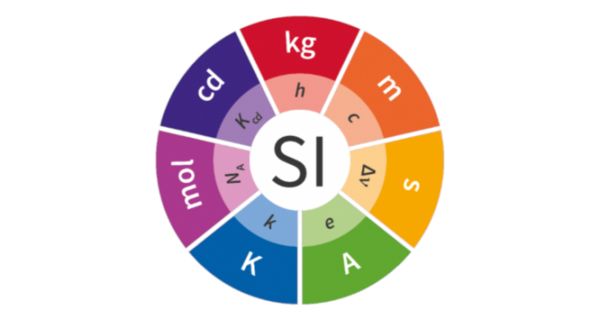
Redefining the SI units
"As science advances, ever more accurate measurements are both needed and achievable. But this improving accuracy must happen through measurement standards and their definitions. In November 2018, at the General Conference on Weights and Measures, the global metrology community agreed a revision to the SI. The decision means that, for the first time, all seven of the base units will be defined in terms of constants of nature – such as the speed of light, the Planck constant and the Avogadro constant. Using seven defining constants as the basis for the SI will mean that the definitions of all the base units will stay stable into the future. The revision will bring in new definitions of the ampere, kilogram, kelvin (and, consequently, degree Celsius) and mole." [...]
Outras Notícias
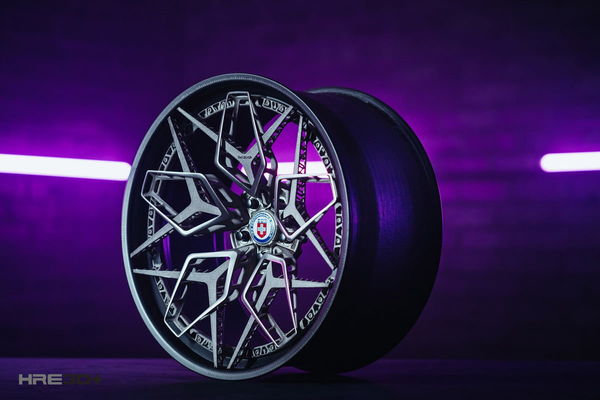
HRE Wheels partners with GE Additive to create first 3D-printed titanium wheel
"HRE Wheels and GE Additive announced a partnership agreement today and unveiled the first titanium wheel created using EBM technology (a type of 3D printing). Known as “HRE3D+”, this new prototype wheel shows what the future of wheel technology will bring and how advanced materials like titanium can be harnessed to create complex designs. The goal of the “HRE3D+” project was to test the capabilities of additive manufacturing in a practical application and to create a highly-sophisticated wheel design with an elusive material like titanium. With a traditional aluminum Monoblok wheel, 80% of material is removed from a 100-pound forged block of aluminum to create the final product. With additive manufacturing, only 5% of the material is removed and recycled, making the process far more efficient. Titanium also has a much higher specific strength than aluminum and is corrosion resistant, allowing it to be extremely lightweight and to be shown in its raw finish." [...]

NASA, Northrop Grumman Launch Space Station, National Lab Cargo
"Northrop Grumman's Cygnus spacecraft is on its way to the International Space Station with about 7,400 pounds of cargo after launching at 4:01 a.m. EST Saturday from NASA’s Wallops Flight Facility on Virginia’s Eastern Shore. The spacecraft launched on an Antares 230 Rocket from the Virginia Mid-Atlantic Regional Spaceport’s Pad 0A at Wallops on the company’s 10th cargo delivery flight, and is scheduled to arrive at the orbital laboratory Monday, Nov. 19. Expedition 57 astronauts Serena Auñón-Chancellor of NASA and Alexander Gerst of ESA (European Space Agency) will use the space station’s robotic arm to grapple Cygnus about 5:20 a.m. Installation coverage will begin at 4 a.m. on NASA Television and the agency’s website. This Commercial Resupply Services contract mission will support dozens of new and existing investigations as Expeditions 57 and 58 contribute to some 250 science and research studies. Highlights from the new experiments include a demonstration of 3D printing and recycling technology and simulating the creation of celestial bodies from stardust." [...]
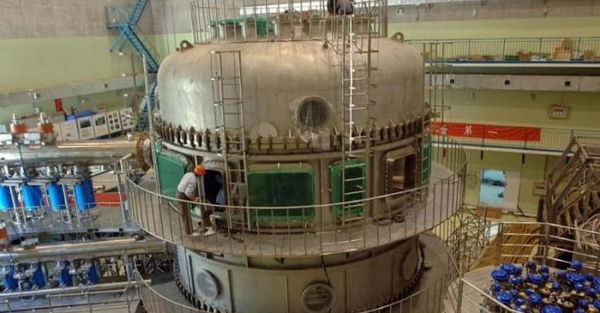
Hotter than the sun: Chinese fusion reactor claims breakthrough
"China’s “artificial sun” has reached a temperature of 180 million ºF with a heating power of 10 megawatts, according to scientists at the Chinese Academy of Sciences’ Institute of Plasma Physics, where the experiment was conducted. That’s six times hotter than the center of the sun. The device, the Experimental Advanced Superconducting Tokamak (EAST), is built to harness the energy of nuclear fusion, the same process that powers stars. Most living things depend on nuclear fusion. If the sun stopped working, so would we. But fusion may also offer a clean energy solution into the future." [...]

Mbed OS 5.10.4 released
"We are pleased to announce the Mbed OS 5.10.4 release is now available. This is the last patch release based on the feature set that Mbed OS 5.10 introduces. Summary In this release we have added support for UNO_91H and TMPM3HQ devices. We have added a fix for the following reported issue: 7804 RF52 serious behavioural regressions in RTC The mbed-client-cli has been updated to v0.4.0. We have also added: EMAC driver for CM3DS Flash IAP support for STM32F407VG on DISCO_F407VG and ARCH_MAX platforms There are also a number of other fixes and code improvements. For full details of this and previous releases, please visit our releases page." [...]

Supersonic Commercial Travel Begins To Take Shape At Lockheed Martin Skunk Works
"Lockheed Martin (NYSE: LMT) Skunk Works® began manufacturing the first part for the X-59 Quiet Supersonic Technology aircraft, marking a milestone to bring supersonic commercial travel over land one step closer to reality. "The start of manufacturing on the project marks a great leap forward for the X-59 and the future of quiet supersonic commercial travel," said Peter Iosifidis, Low Boom Flight Demonstrator program manager Lockheed Martin Skunk Works. "The long, slender design of the aircraft is the key to achieving a low sonic boom. As we enter into the manufacturing phase, the aircraft structure begins to take shape, bringing us one step closer to enabling supersonic travel for passengers around the world." Earlier this year, NASA selected Lockheed Martin to design, build and flight test the Low Boom Flight Demonstrator. The X-59 will conduct its first flight in 2021." [...]
Ciência e Tecnologia

New prosthetic technology lets you control artificial arms as your own biological limb
"In a recent paper published on Journal of Neural Engineering, researchers at the University of Twente (NL), in cooperation with Imperial College London (UK) and University of Aalborg (DK) have presented a radically new technology that enables upper-limb amputees to control robotic prostheses as a natural extension of the own body. The technology is based on the concept of musculoskeletal modelling and represents an alternative to widely used machine learning methods. There are millions of people around the world that lost some part of their body as a result of amputation. Engineering solutions have the potential for immediate and sometimes dramatic restoration of the lost motor skills. However, despite advances, current prosthetic limbs provide limited functionality. Movement in able-bodied individuals begins with electrical impulses sent by the brain that trigger muscles into action." [...]
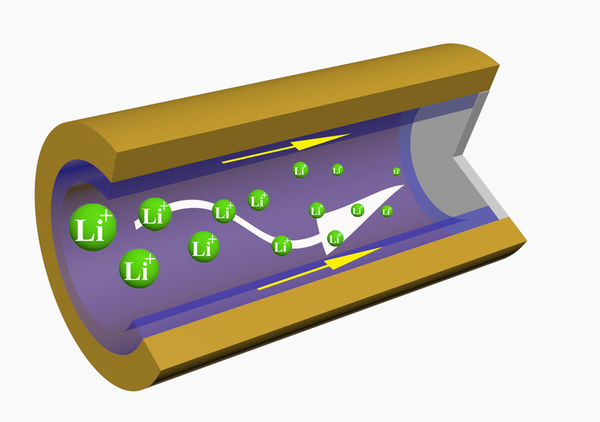
Next-gen batteries possible with new engineering approach
"Dramatically longer-lasting, faster-charging and safer lithium metal batteries may be possible, according to Penn State research, recently published in Nature Energy. The researchers developed a three-dimensional, cross-linked polymer sponge that attaches to the metal plating of a battery anode. "This project aims to develop the next generation of metal batteries," said Donghai Wang, professor of mechanical engineering and the principal investigator of the project. "Lithium metal has been tried in batteries for decades, but there are some fundamental issues that inhibit their advancement." Under additional strain, like in the fast-charging methods desired in electrical vehicles, lithium ion (Li) batteries are vulnerable to dendritic growth — needle-like formations that can reduce cycle life and potentially cause safety issues — including fires or explosions. "Our approach was to use a polymer on the interface of Li metal," Wang explained." [...]

Feeling the Pressure with Universal Tactile Imaging
"Touch, or tactile sensing, is fundamentally important for a range of real-life applications, from robotics to surgical medicine to sports science. Tactile sensors are modeled on the biological sense of touch and can help researchers to understand human perception and motion. Researchers from Osaka University have now developed a new approach to pressure distribution measurement using tactile imaging technology. Pressure is one of the primary characteristics of touch, and tactile imaging can be used to measure pressure or stress distributions across an object of interest. The most common current approach to tactile imaging involves use of an array of sensors composed of pressure-sensitive materials. However, such arrays require complex fabrication processes and place limitations on the sensor design, hence the necessity of a new method, now outlined in an article in IEEE Transactions on Industrial Electronics." [...]
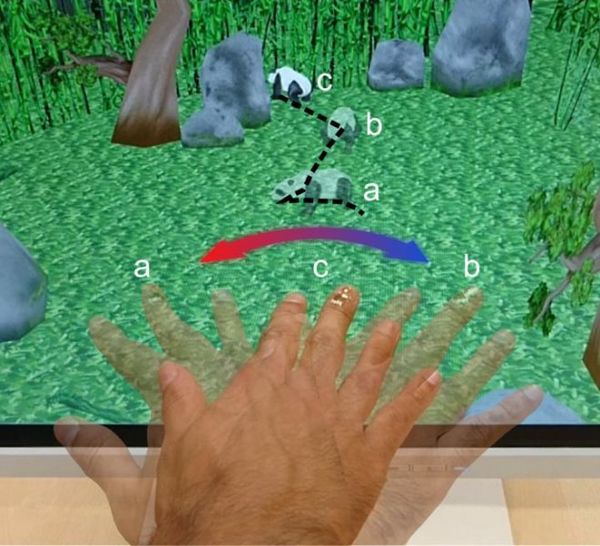
Electronic Skin points the Way North
"HZDR researchers use sensors to give humans magnetoception While birds are able to naturally perceive the Earth’s magnetic field and use it for orientation, humans have so far not come close to replicate this feat – at least, until now. Researchers at the Helmholtz-Zentrum Dresden-Rossendorf (HZDR) in Germany have developed an electronic skin (e-skin) with magnetosensitive capabilities, sensitive enough to detect and digitize body motion in the Earth’s magnetic field. As this e-skin is extremely thin and malleable, it can easily be affixed to human skin to create a bionic analog of a compass. This might not only help people with orientation issues, but also facilitate interaction with objects in virtual and augmented reality. The results have been published in the journal Nature Electronics (DOI: 10.1038/s41928-018-0161-6). Just swipe your hand to the left and the virtual panda on the screen will start making its way towards the bottom left." [...]
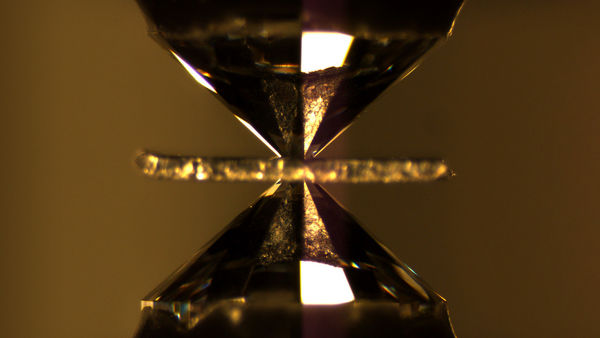
Under pressure, opposites attract
"Researchers have uncovered a new material that can produce both magnetism and superconductivity. In the physical world, one of the most incontrovertible truths is that magnetism and superconductivity are usually incompatible. Like two battalions of soldiers fighting over the same territory, when a material makes the transition from a normal to a superconducting state, it actively “kicks out” the magnetic fields from its interior; this is known as the Meissner effect. However, scientists have identified a few materials in which the two battalions can peacefully coexist, producing both magnetism and superconductivity. Research conducted in part at the U.S. Department of Energy’s (DOE) Argonne National Laboratory has identified another material that can produce both magnetism and superconductivity: ytterbium. This finding is important because it potentially brings scientists a step closer in their search for a superconductor that can operate at room temperature, opening up myriad new applications." [...]
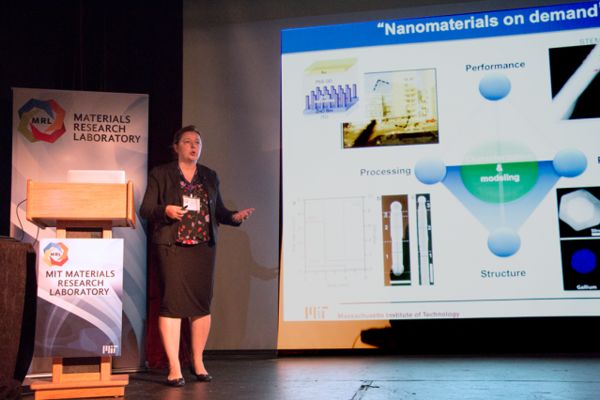
Improving materials from the nanoscale up
"At the Materials Day Symposium, researchers focus on tools that probe atomic structures in action to yield better designs for metals, solar cells, and polymers. The 2018 MIT Materials Research Laboratory (MRL) Materials Day Symposium, highlighting advances in materials science and engineering, took place in Kresge Auditorium on Oct. 10. Among the latest advances shared: Powerful new combinations of X-rays, electrical probes, and analytical computing that are yielding insights into problems as diverse as fatigue in steel and stability in solar cells. “Fatigue in steel is a major issue; you don’t see any changes in the shape of your material, and suddenly it fails," MIT Assistant Professor C. Cem Taşan said at the event. “We are putting a lot of effort in maintenance and safety, yet still we have devastating accidents,” he said, recalling the airline incident in April 2018 when a jet engine turbine blade broke apart and shrapnel from the engine broke a plane window fatally injuring a passenger. “The airline company basically said that component passed all the maintenance requirements." [...]

Very Heavy Elements Deliver More Electrons
"Scientists revise understanding of the limits of bonding for very electron-rich heavy elements. The Science Actinides, a series of 15 radioactive elements, are vital to medicine, energy, and national defense. Scientists examined two exceedingly rare actinides, berkelium and californium. These elements are at the extreme end of what is possible to synthesize in more-than-atom amounts for chemical study. These elements are only available in tiniest amounts. The scientists showed that the elements can lose electrons to bond like lighter actinides." [...]
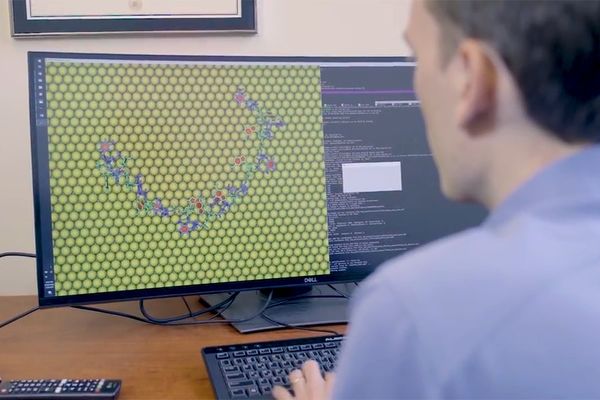
Engineers Use Machine Learning To Help Find Renewable Energy Sources
"Researchers at Carnegie Mellon University are paving the way to total reliance on renewable energy as they study both large- and small-scale ways to replace fossil fuels. One promising avenue is converting simple chemicals into valuable ones using renewable electricity, including processes such as carbon dioxide reduction or water splitting. But to scale these processes up for widespread use, we need to discover new electrocatalysts — substances that increase the rate of an electrochemical reaction that occurs on an electrode surface. Zack Ulissi, an assistant professor of chemical engineering, and his group are using machine learning to guide electrocatalyst discovery. By hand, researchers spend hours doing routine calculations on materials that may not end up working. Ulissi's team has created a system that automates these routine calculations, explores a large search space, and suggests new alloys that have promising properties for electrocatalysis." [...]

Graphene boosts GHz signals into terahertz territory
"According to scientists, graphene can generate clock speeds that transcend today’s GHz limitations. Here’s how. Graphene – a one-atom-thick layer of hexagonally arranged carbon atoms – is the thinnest and strongest material known to man and an excellent conductor of heat and electricity. Since 2004, when researchers discovered how to extract it from graphite, graphene has opened new windows of opportunity in the world of science and technology. Over the past decade, scientists have predicted that its unique structure would make it especially efficient in converting optical or electronic signals into signals of much higher frequencies. However, all efforts to prove this were unsuccessful." [...]
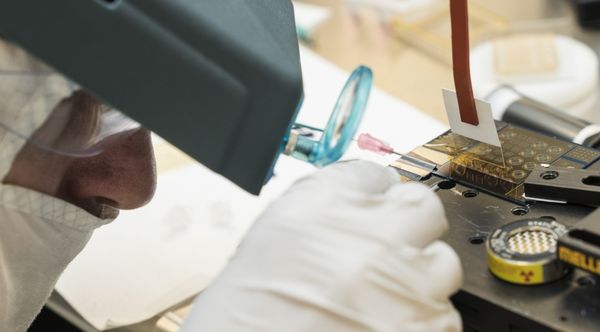
Using electricity and water, a new kind of motor can slide microrobots into motion
"Lincoln Laboratory’s microhydraulic actuators, thinner than a third of the width of human hair, are proving to be the most powerful and efficient motors at the microscale. Look around and you'll likely see something that runs on an electric motor. Powerful and efficient, they keep much of our world moving, everything from our computers to refrigerators to the automatic windows in our cars. But these qualities change for the worse when such motors are shrunk down to sizes smaller than a cubic centimeter. "At very small scales, you get a heater instead of a motor," said Jakub Kedzierski, staff in Lincoln Laboratory's Chemical, Microsystem, and Nanoscale Technologies Group. Today, no motor exists that is both highly efficient and powerful at microsizes." [...]

New algorithms to predict power grid impacts from hackers, earthquakes and - squirrels?
"What would it take for an entire American city to lose power? What circumstances and failures in the electrical grid’s infrastructure would lead to a dramatic, long-term blackout? And what weak points could utility companies invest in to help prevent a catastrophic shutdown? A three-year project at Lawrence Livermore National Laboratory (LLNL) is attempting to answer those questions using a new algorithm called “Squirrel” to model power outages and enable government agencies and utilities to automatically identify weaknesses in the power grid. Squirrel is part of a three-year Laboratory Directed Research & Development (LDRD) project aimed at determining the risk to the grid from a cyberattack, called the Quantitative Intelligent Adversary Risk Assessment (QIARA). But because Squirrel is “cause agnostic,” according to project manager Jovana Helms, it can be used with any kind of threat or hazard, including a malicious hack, earthquake or even squirrels (which often chew into electrical wires and cause outages)." [...]

New Materials: Growing Polymer Pelts
"Polymer pelts made of the finest of fibers are suitable for many different applications, from coatings that adhere well and are easy to remove to highly sensitive biological detectors. Researchers at Karlsruhe Institute of Technology (KIT) together with scientists in the United States have now developed a cost-effective process to allow customized polymer nanofibers to grow on a solid substrate through vapor deposition of a liquid crystal layer with reactive molecules. The researchers report on their innovative method in the journal Science. (DOI: 10.1126/science.aar8449) Surfaces with specially aligned fibers are quite abundant in nature and perform different functions such as sensing, adhering and self-cleaning. For example, the feet of geckos are covered with millions of hairs that allow them to adhere to surfaces and pull off again very easily. The synthesis of such surfaces from man-made materials opens up new perspectives for different applications." [...]

Self-sensing materials are here
"Carbon fiber composites—lightweight and strong—are great structural materials for automobiles, aircraft and other transportation vehicles. They consist of a polymer matrix, such as epoxy, into which reinforcing carbon fibers have been embedded. Because of differences in the mechanical properties of these two materials, the fibers can detach from the matrix under excessive stresses or fatigue. That means damage in carbon fiber composite structures can remain hidden below the surface, undetectable by visual inspection, potentially leading to catastrophic failure. “Carbon fiber composites fail catastrophically, so you won’t see damage until the entire structure has failed,” said Chris Bowland, a Wigner Fellow at the Department of Energy’s Oak Ridge National Laboratory. “By knowing what’s going on within the composite, you can better judge its health and know if there is damage that needs to be repaired.” Recently, Bowland and Amit Naskar, leader of ORNL’s Carbon and Composites Group, invented a roll-to-roll process to coat electrically conductive carbon fibers with semiconducting silicon carbide nanoparticles." [...]

Seeing cell membranes in new light
"Researchers challenge conventional thinking with Jell-O comparison Adam Cohen, a professor of chemistry and chemical biology and of physics, is the lead author of a new study that challenges conventional theories about the fluid nature of cell membranes and how they react to tension. Scientists have long believed that membranes act like a viscous liquid, similar to honey, and that tension could be transmitted almost instantly from one side of a cell to the other. But Cohen and Zheng Shi, a postdoctoral fellow working in Cohen’s lab, discovered that they’re actually closer to a semisolid like Jell-O. The study was described in Cell. “The conventional picture is that the membrane is what we call a two-dimensional fluid, meaning the lipid molecules that make it up are stuck in the plane of the membrane … but within that plane those molecules can move around,” Cohen said. “It’s like people milling around in Grand Central Station — everybody is stuck to the plane of the floor, but they can move around." [...]

Bending Light Around Tight Corners Without Backscattering Losses
"New photonic crystal waveguide based on topological insulators paves the way to build futuristic light-based computers Engineers at Duke University have demonstrated a device that can direct photons of light around sharp corners with virtually no losses due to backscattering, a key property that will be needed if electronics are ever to be replaced by light-based devices. The result was achieved with photonic crystals built on the concept of topological insulators, which won its discoverers a Nobel Prize in 2016. By carefully controlling the geometry of a crystal lattice, researchers can block light from traveling through its interior while transmitting it perfectly along its surface. The device accomplishes its near-perfect transmittance around corners despite being much smaller than previous designs. The Semiconductor Industry Association estimates that the number of electronic devices is increasing so rapidly that by the year 2040, there won’t be enough power in the entire world to run them all. One potential solution is to turn to massless photons to replace the electrons currently used for transmitting data." [...]

Spatial Flux: Body and Architecture in Space
"Structurally, zero gravity means that we do not have to contend with architecture's greatest arch-nemesis, gravity. This opens up a new world of possibilities where we can deploy structures that no longer have to counteract/resist gravitational force. We would like to explore new forms of rapid inflatable prototyping. Most importantly, this prototype explores surfaces utilizing materials that would normally fail on Earth, yet flourish in zero gravity. This year the MIT Media Lab's City Science group had an opportunity to think of architecture at the scale of the body that was literally out of this world. These are the results." [...]

NRL Demonstrates New Nonmechanical Laser Steering Technology
"Scientists at the U.S. Naval Research Laboratory have recently demonstrated a new nonmechanical chip-based beam steering technology that offers an alternative to costly, cumbersome and often unreliable and inefficient mechanical gimbal-style laser scanners. The chip, known as a steerable electro-evanescent optical refractor, or SEEOR, takes laser light in the mid-wavelength infrared (MWIR) as an input and steers the beam in two dimensions at the output without the need for mechanical devices — demonstrating improved steering capability and higher scan speed rates than conventional methods. “Given the low size, weight and power consumption and continuous steering capability, this technology represents a promising path forward for MWIR beam-steering technologies,” said Jesse Frantz, research physicist, NRL Optical Sciences Division. “Mapping in the MWIR spectral range demonstrates useful potential in a variety of applications, such as chemical sensing and monitoring emissions from waste sites, refineries, and other industrial facilities.” The SEEOR is based on an optical waveguide – a structure that confines light in a set of thin layers with a total thickness of less than a tenth that of a human hair. Laser light enters through one facet and moves into the core of the waveguide." [...]
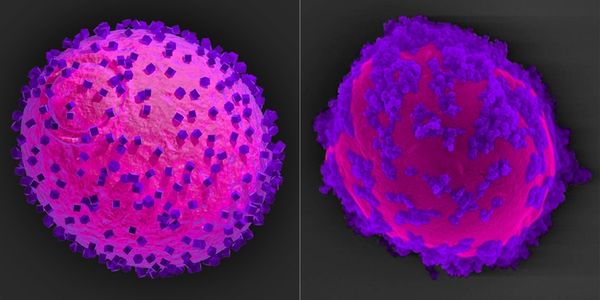
Solar panels for yeast cell biofactories
"First yeast biohybrid system using an adaptable light-harvesting semiconductor approach opens the door to more efficient and versatile biomanufacturing Genetically engineered microbes such as bacteria and yeasts have long been used as living factories to produce drugs and fine chemicals. More recently, researchers have started to combine bacteria with semiconductor technology that, similar to solar panels on the roof of a house, harvests energy from light and, when coupled to the microbes’ surface, can boost their biosynthetic potential. The first “biological-inorganic hybrid systems” (biohybrids) mostly focused on the fixation of atmospheric carbon dioxide and the production of alternative energies, and although promising, they also revealed key challenges. For example, semiconductors, which are made from toxic metals, thus far are assembled directly on bacterial cells and often harm them in the process. In addition, the initial focus on carbon-fixing microbes has limited the range of products to relatively simple molecules; if biohybrids could be created based on microorganisms equipped with more complex metabolisms, it would open new paths for the production of a much larger range of chemicals useful for many applications. Now, in a study in Science, a multidisciplinary team led by Core Faculty member Neel Joshi and Postdoctoral Fellows Junling Guo and Miguel Suástegui at Harvard’s Wyss Institute for Biologically Inspired Engineering and John A. Paulson School of Engineering and Applied Sciences (SEAS) presents a highly adaptable solution to these challenges." [...]

Opening Access to Explore the Synthetic Chemistry of Neptunium
"New, easily prepared starting material opens access to learning more about a difficult-to-control element in nuclear waste. The Science Leftovers from nuclear reactors contain the element neptunium. To safely store the waste, scientists need to know more about how to control neptunium’s chemistry. Knowing the stability of different oxidation states is central to chemical control. The +3 oxidation state is generally inaccessible in aqueous (water-based) solutions. Researchers devised an easy way to access neptunium in the +3 oxidation state." [...]
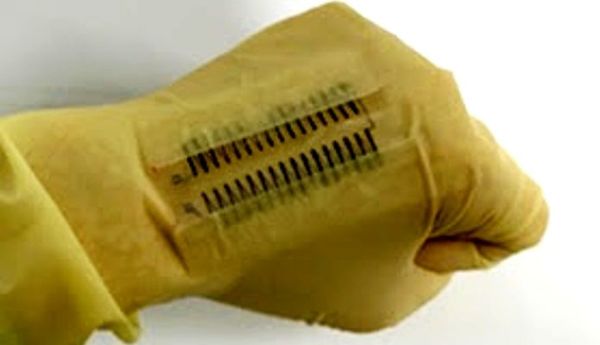
Energizing heat for smart appliances
"Materials that harvest heat and turn it into electricity could lead to more cost-effective devices. Scientists are getting closer to designing thermoelectric materials that efficiently harvest heat from the surrounding environment and convert it into electricity to power various devices and appliances, according to a review of the latest research in the journal Science and Technology of Advanced Materials. Devices made with these materials could avoid the need to recharge, change and dispose of batteries. For thermoelectric materials to be efficient energy producers, they need to be able to hold heat and conduct electricity well. Thermoelectric materials that can work near room temperature and are flexible would be especially advantageous, particularly for use in wearable devices. Three types of conducting materials are being investigated for use in thermoelectric devices: inorganic, organic and hybrid materials." [...]

Imec, Ghent University and SEED Demonstrate Electronics in Hydrogel-based Soft Lenses
"At the imec technology forum Japan (ITF Japan 2018), imec, the world-leading research and innovation hub in nanoelectronics and digital technologies, the Ghent University (UGent), and contact lens manufacturer SEED Co., Ltd. announced that they have developed a contact lens with an integrated LED light, including an ultra-thin silicon microchip, radio‐frequency (RF) antenna for wireless energy transfer, and stretchable thin‐film interconnections. Different from the traditional contact lens-type wearable devices made of non-water-containing material, this novel device is made of hydrogel-based material. This demonstration of autonomous electronics in hydrogel-based soft lenses opens the door to unique applications such as lenses with sensors and/or drug-delivery systems for the treatment of different eye disorders, at the congenital, post-surgery or trauma level. The main advantages of such devices are their low invasiveness level and continuous monitoring in an almost imperceptible manner. About 130 million people worldwide wear contact lenses, mainly to correct their vision. Now, with electronic systems getting ever smaller and with the possibility of having electrical power on-lens, it becomes feasible to integrate a variety of transducers (i.e." [...]

Stanford develops an electronic glove that gives robots a sense of touch
"Stanford researchers have developed an electronic glove that bestows robotic hands with some of the manual dexterity humans enjoy. Stanford engineers have developed an electronic glove containing sensors that could one day give robotic hands the sort of dexterity that humans take for granted. In a paper published Nov. 21 in Science Robotics, chemical engineer Zhenan Bao and her team demonstrated that the sensors work well enough to allow a robotic hand to touch a delicate berry and handle a pingpong ball without squashing them. “This technology puts us on a path to one day giving robots the sort of sensing capabilities found in human skin,” Bao said. Bao said the sensors in the glove’s fingertips simultaneously measure the intensity and direction of pressure, two qualities essential to achieving manual dexterity. The researchers must still perfect the technology to automatically control these sensors but when they do, a robot wearing the glove could have the dexterity to hold an egg between thumb and forefinger without smashing it or letting it slip." [...]

Tiny antennae directing light at the chip scale
"A hybrid nanoantenna designed to manipulate visible light could one day help transmit information in tiny optical devices A nanoscale optical antenna developed by researchers at A*STAR allows the manipulation of visible light waves on the scale of microchips. Such nanoantennae may enable the development of high-resolution imaging systems in small mobile devices. Photons in light beams can carry more information than electrons traveling through electrical wiring. If light could be directed within nanoscale chips as a means of wireless data transfer, it could open the way for technologies such as high-speed imaging for medical uses, and phone screens that boast high resolution, three-dimensional displays. Now, Jinfa Ho, Joel Yang, and Arseniy Kuznetsov and their team at A*STAR's Institute of Materials Research and Engineering have developed a nanoscale antenna that can transmit light waves at the chip scale. Crucially, their design is the first to enable precise control of the direction that the light waves are traveling, while limiting radiation leakage that could create interfering crosstalk between components." [...]
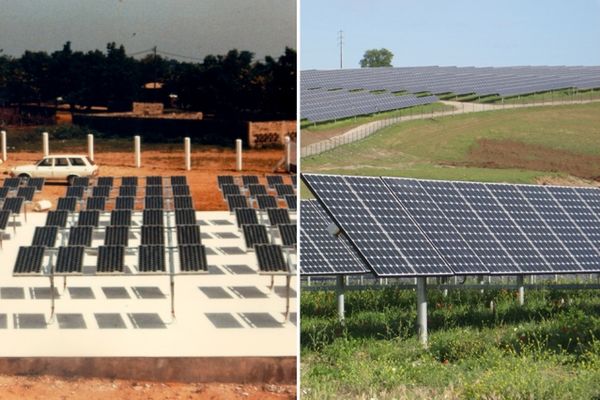
Explaining the plummeting cost of solar power
"Researchers uncover the factors that have caused photovoltaic module costs to drop by 99 percent. The dramatic drop in the cost of solar photovoltaic (PV) modules, which has fallen by 99 percent over the last four decades, is often touted as a major success story for renewable energy technology. But one question has never been fully addressed: What exactly accounts for that stunning drop? A new analysis by MIT researchers has pinpointed what caused the savings, including the policies and technology changes that mattered most. For example, they found that government policy to help grow markets around the world played a critical role in reducing this technology’s costs. At the device level, the dominant factor was an increase in “conversion efficiency,” or the amount of power generated from a given amount of sunlight." [...]
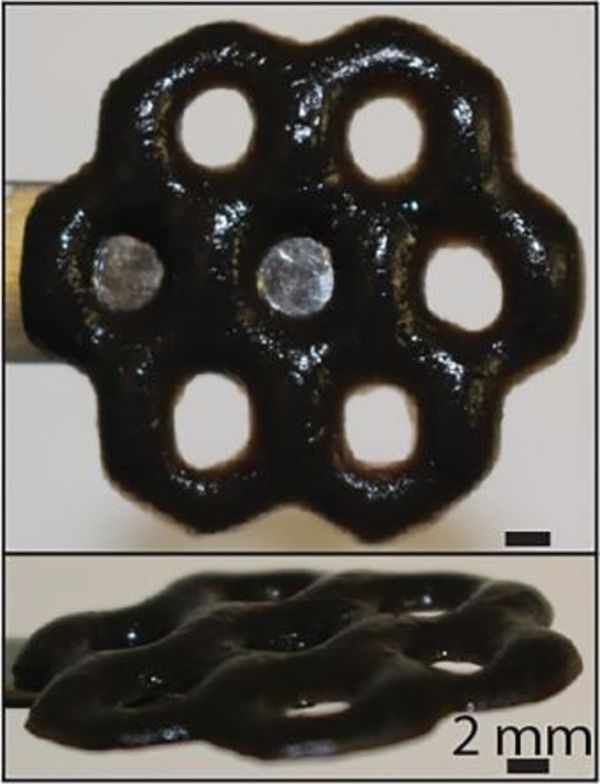
Researchers create new 'smart' material with potential biomedical, environmental uses
"By combining seaweed-derived alginate with the nanomaterial graphene oxide, Brown University researchers have developed a new material that’s durable and can respond dynamically to its environment. PROVIDENCE, R.I. [Brown University] — Brown University researchers have shown a way to use graphene oxide (GO) to add some backbone to hydrogel materials made from alginate, a natural material derived from seaweed that’s currently used in a variety of biomedical applications. In a paper published in the journal Carbon, the researchers describe a 3-D printing method for making intricate and durable alginate-GO structures that are far stiffer and more fracture resistant that alginate alone. “One limiting factor in the use of alginate hydrogels is that they’re very fragile — they tend to fall apart under mechanical load or in low salt solutions,” said Thomas Valentin, a Ph.D. student in Brown’s School of Engineering who led the work. “What we showed is by including graphene oxide nanosheets, we can make these structures much more robust.” The material is also capable of becoming stiffer or softer in response to different chemical treatments, meaning it could be used to make “smart” materials that are able to react to their surroundings in real time, the research shows. In addition, alginate-GO retains alginate’s ability to repel oils, giving the new material potential as a sturdy antifouling coating." [...]
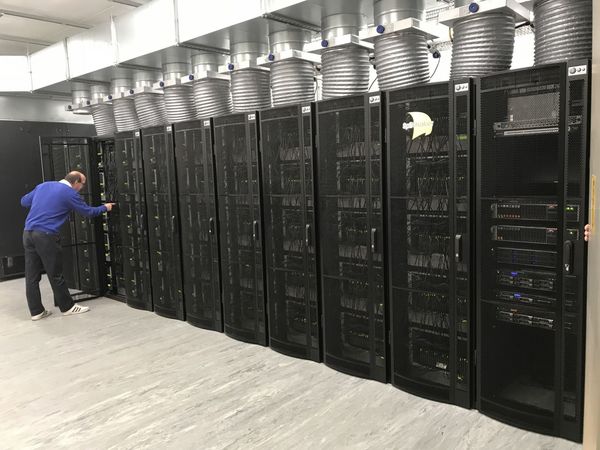
'Human brain' supercomputer with 1 million processors switched on for first time
"The world’s largest neuromorphic supercomputer designed and built to work in the same way a human brain does has been fitted with its landmark one-millionth processor core and is being switched on for the first time. The newly formed million-processor-core ‘Spiking Neural Network Architecture’ or ‘SpiNNaker’ machine is capable of completing more than 200 million million actions per second, with each of its chips having 100 million transistors. To reach this point it has taken £15million in funding, 20 years in conception and over 10 years in construction, with the initial build starting way back in 2006. The project was initially funded by the EPSRC and is now supported by the European Human Brain Project. It is being switched on for the first time on Friday, 2 November. The SpiNNaker machine, which was designed and built in The University of Manchester’s School of Computer Science, can model more biological neurons in real time than any other machine on the planet." [...]

Building a new wave of lightweight structural panels
"Computerized design reveals how honeycomb-like frameworks with unusual rippled shapes can produce buckle-resistant architectures Composite panels that sandwich a porous inner core between two solid outer sheets are increasingly being used in aircraft to reduce weight while maintaining structural rigidity. A study led by A*STAR may help other industries exploit the benefits of sandwich panels by using three-dimensional (3D) printing to generate core structures optimized for different mechanical loads.1 Many existing sandwich panels have cores inspired by the efficiently packed hexagonal cells inside beehives. Recently, researchers have investigated strategies to minimize the weights of cores by constructing lattice-like frameworks held together by thin beams known as trusses. But preventing these trusses from warping or buckling prematurely is still an ongoing challenge. One surprising way that engineers are tackling this problem is by switching from normally straight trusses to ones with bumps, waves, and other irregular features. “Diameter variations allow for local thickening where the highest buckling moments occur, while reducing thickness in other areas along the trusses,” explains Stefanie Feih from the Singapore Institute of Manufacturing Technology (SIMTech) at A*STAR." [...]

Helping fuel cells beat the heat
"A strategy for stabilizing silver films could make high-efficiency fuel cells usable in portable devices Solid oxide fuel cells (SOFCs) offer a stable and efficient way to generate clean electrochemical power, but are impractical for use in portable devices because of their high operating temperatures. A new design and production strategy developed by Florencia Edith Wiria of the A*STAR Singapore Institute of Manufacturing Technology and Pei-Chen Su at Nanyang Technological University could help propel SOFCs into mainstream use1. Micro-scale SOFCs could transform consumer electronics, delivering more power than existing batteries in an environmentally-friendly way. Silver is an appealing and affordable alternative to the costly platinum cathodes employed in current micro-SOFC designs. But silver electrodes melt, so they cannot retain the fine porous structure required for an efficient electrochemical reaction at the 500-1,000 degrees Celsius temperature range at which these devices generally operate. Wiria and Su therefore sought to develop a heat-resistant version of this system." [...]
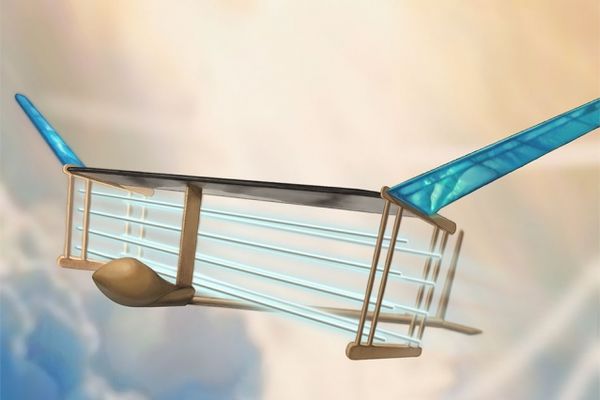
MIT engineers fly first-ever plane with no moving parts
"The silent, lightweight aircraft doesn’t depend on fossil fuels or batteries. Since the first airplane took flight over 100 years ago, virtually every aircraft in the sky has flown with the help of moving parts such as propellers, turbine blades, and fans, which are powered by the combustion of fossil fuels or by battery packs that produce a persistent, whining buzz. Now MIT engineers have built and flown the first-ever plane with no moving parts. Instead of propellers or turbines, the light aircraft is powered by an “ionic wind” — a silent but mighty flow of ions that is produced aboard the plane, and that generates enough thrust to propel the plane over a sustained, steady flight. Unlike turbine-powered planes, the aircraft does not depend on fossil fuels to fly. And unlike propeller-driven drones, the new design is completely silent." [...]
Modelos 3D
Com a disponibilidade de ferramentas que permitem dar azo a nossa imaginação na criação de peças 3D e espaços como o thingiverse para as publicar, esta rubrica apresenta alguns modelos selecionados que poderão ser úteis.
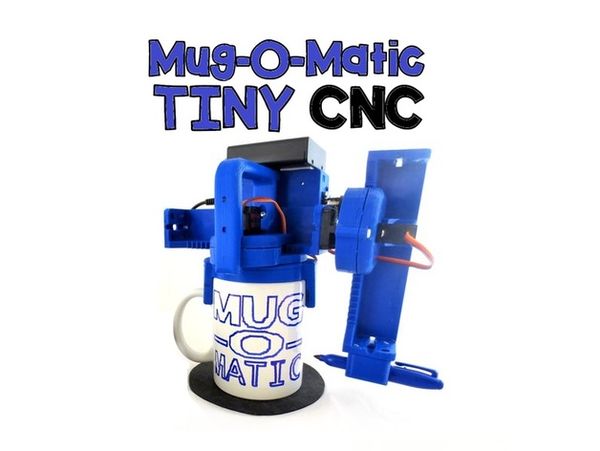
Mug-O-Matic Tiny CNC Drawing Robot
"Mug-O-Matic is a toy 3-axis Tiny CNC drawing robot that can customize coffee mugs! This capable little robot can draw anything you want via manual control, bluetooth, calculated algorithms, & even g-code. So you can enjoy your custom mug creation, then wipe it clean and draw something totally different every day and never have the same thing twice! The intent of this project is to produce fun and accessible educational tools. We want to encourage & inspire people to engage in tinkering and making things, because the creative process is a powerful way to learn. To best serve that purpose, these robots are designed with hackable open source hardware and are controlled by free open source software." [...]
Documentação
A documentação é parte essencial do processo de aprendizagem e a Internet além de artigos interessantes de explorar também tem alguma documentação em formato PDF interessante de ler. Todos os links aqui apresentados são para conteúdo disponibilizado livremente pelo editor do livro.

newelectronics 13 Novembro 2018
"New Electronics is a fortnightly magazine focusing on technological innovation, news and the latest developments in the electronics sector. Downloadable as a digital page turner or pdf file, or offered as a hard copy, the New Electronics magazine is available in a format to suit you" [...]
Projetos Maker
Diversos Projetos interessantes.

I2C GPS Module PCB
"This is a compact GPS module with an I2C interface, making it easy to read the GPS parameters from another project without needing to worry about parsing the NMEA sentences. It's a PCB-mounted version of my earlier project I2C GPS Module. As an example of using the module I also describe a GPS mapping application, that plots a map of your route on an OLED display. I based the PCB on the GlobalTop Technology FGPMMOPA6C GPS module, also known as the GTPA010 [1], and these are available from Aliexpress [2]. It should also work with more recent versions of that module, such as the PA6H available from Adafruit [3]. The GPS module is rated at 3.3V so I included a 3.3V regulator on the board so you can power the board from 3.3V or 5V." [...]
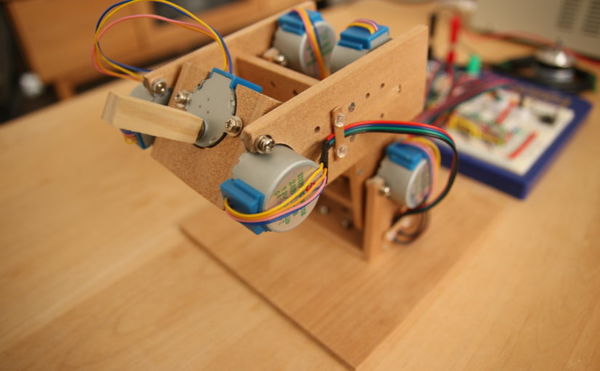
ESP32 Micro Robot Arm
"Talk about cheap stepping motors and there’s a good chance someone will mention the “28BYJ-48”. Or maybe he or she will not remember the part number and say something along the lines of “That 3 dollar stepper used in air conditioners! You know! B28 something!” Truth be told, it doesn’t get much cheaper than 3 dollars. The 28BYJ-48 is the queen of ultra-low-cost steppers. But is there good in the cheap?" [...]

Low Cost Automation ESP32 and 16 Relays
"Today, well discuss an automation project with ESP32 as a Web Server! Well use ESP32 to display a page with temperature, humidity, and buttons to change the state of relays. Well use the MCP23017 to increase the number of pins available in the ESP, which allows us to connect up to 128 relays. I want to point out that in this video you will realize that it is not worth doing a project using the ESP-01 with Arduino Mega, as previously shown in the video, Arduino Mega + WiFi = Automation. I had done that specific video at the request of several followers. In my opinion, the ESP32 is much better, due to the total control that this microcontroller gives you." [...]

Project: Home Energy Saver
"Hannah Robinson, Rachel Wier, Kaila Cleary The use of an Arduino board and Matlab proved to be a simple and effective method to help homeowners optimize their energy usage. The simplicity and versatility of the Arduino board is surprising. There are so many add-ons and uses for the board, that it was difficult to choose what the best and most interesting type of assistance would be without choosing something extremely complex. Overall, we chose to focus on taking the temperature and being able to turn a fan on or off based on the temperature given. " [...]

Super Low Cost Source
"Did you realize that its possible to make your own source and actually spend a third of the amount you would need to buy a ready-made one? This source is with an output of four current and voltage regulators, two of them digital and two analog, which operate from 0 to 24 volts with a maximum load of 5 amps. I'm going to show you this today, which is an assembly that carries the DPS3005 module. This subject is a source of current and digital voltage, and it is a monstrous utility. In this video today, we are going to talk about two source models. One can provide four different voltages." [...]
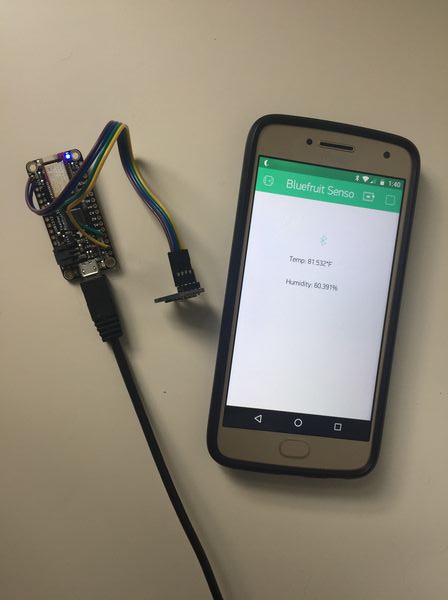
EnviroPi: Taking a DIY Internet-of-Things approach to an environmental monitoring system
"Monitoring environmental conditions in cultural heritage organizations is vitally important to ensure effective preservation of collections. Environmental monitoring systems may range from stand-alone data-loggers to more complex networked systems and can collect a variety of sensor data such as temperature, humidity, light, or air quality measures. However, such commercial systems are often costly and limited in customizability and extensibility. This article describes a do-it-yourself network of Bluetooth Low Energy-based wireless sensors, which seeks to manage earlier-identified trade-offs in cost, required technical skill, and maintainability, based on the Raspberry Pi™ single-board computer and a series of microcontroller boards. This builds on the author’s prior work exploring the construction of a low-cost Raspberry-Pi™-based datalogger, iterating upon reviewer and practitioners’ feedback to implement and reflect upon suggested improvements. Introduction Controlling environmental conditions is an important tool used in preserving collections, with building design and HVAC systems widely used to achieve the desired conditions." [...]
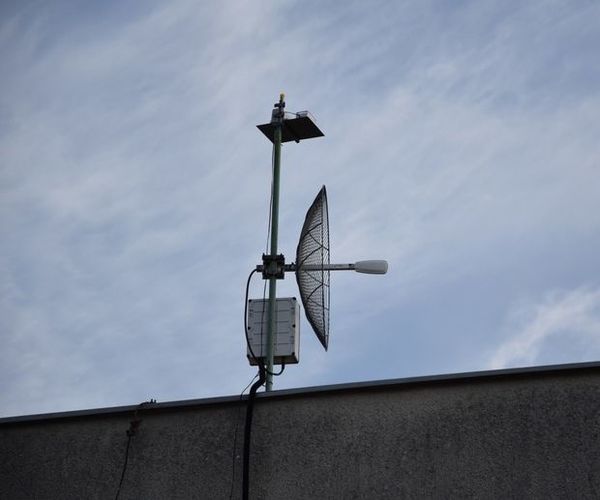
Arduino Weathercloud Weather Station
"I made a weather station connected to internet. It measures temperature, humidity, pressure, rainfall, UV index and it calculates few more important meteorological values. It then sends this data to weathercloud.net, which has nice graphics and UX. It also has a weather webcamera. It cost me around 150. I made this station as my school project." [...]

LittleBot Budget: Simple Arduino Robot V2
"With the LittleBot Budget we wanted to make it as easy as possible for kids to get started with robots. So we boiled a robot down to its very essence. A way to move, a way to think, and a way to see. Once those are in place you have a robot that you can do a surprisingly large amount with. And it is affordable enough that any classroom, group, or individual can build them, opening up robotics to anyone who is interested. But we went a step further." [...]

Shift Registers: How Do They Work?
"Recently, I was going through the pile of old projects which I had made when I had just got into electronics. I found a 24 x 6 LED matrix which was my first 'complete' project. A lot of messy wiring, not perfect but it still works fine. At the time I made this project, I never thought about the components which were used, how did they work, etc. I just wanted to complete it as soon as possible and have some fun. And I'm sure there are many like me." [...]
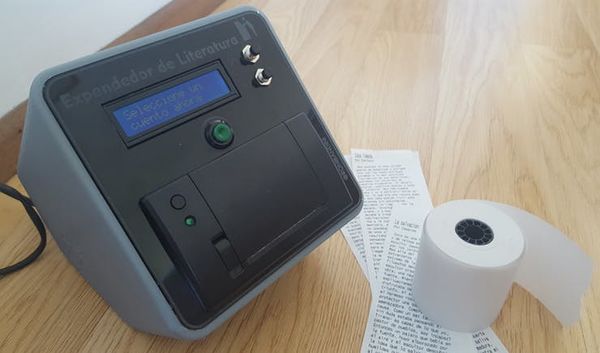
Literature Dispenser
"Designed for waiting rooms, this literature dispenser will give you short stories to read. One day I was waiting in the bank with a "take a number" ticket along with other 50 people in the same situation and I thought "What if I put short stories in these tickets? We will be all reading literature instead of looking at the walls" Maybe this will sound weird, but In Argentina, you cannot use electronic devices inside banks for security reasons - you cannot even use your Amazon Kindle - and banks are crowded all days. So I started to work in a prototype. " [...]

Super Gamepad Zero: RetroPie in an Original Super Nintendo controller
"Who needs a Raspberry Pi case when your controller can be this case? In this followup to my original NES Gamepad Zero guide, I'll be installing a Raspberry Pi Zero into a Super Nintendo controller in order to add more buttons and gain access to a wider range of games. In a nutshell, we'll 3D print a new bottom housing for an original/OEM SNES controller and install the tiny $10 Raspberry Pi Zero computer. On the Raspberry Pi we'll install RetroPie, an open-source software library that will allow us to emulate thousands of games. Don't have a 3D printer? No worries!" [...]
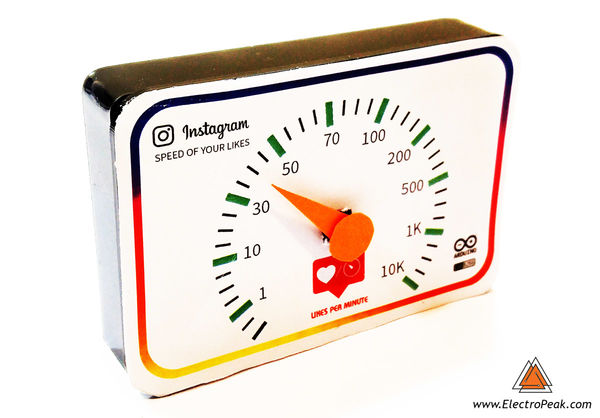
Instagram Likes Speedometer by Arduino & ESP8266
"It would fun to see how your Instagram posts perform in action! We are going to build a gauge that shows your Likes per minute speed. In this article, you will learn how to get data from web pages by ESP8266 and send them to Arduino to analyze and run other actuators. At the end of this article, you can : Connect the ESP8266 to the internet and get data from web pages. Use Arduino to read ESP8266 data and analyze them. Get data from social media such as Instagram." [...]

Mini 2-player Arcade From an Old Laptop and Ikea Chopping Boards.
"I love retro gaming. All those old arcade machines and consoles were just so much fun. I'd love my own arcade machine but I simply don't have the space. Playing with a gamepad through a console on the TV just doesn't feel right so I needed to make a bar-top machine. There are plenty of Raspberry Pi based machines like this out there but I wanted something a little more powerful. This is a complex build and you will need both skills in electronics and woodworking." [...]
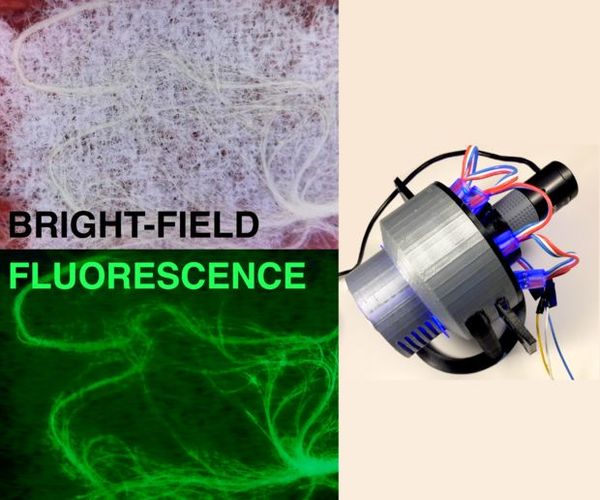
Low-cost Fluorescence and Brightfield Microscopes
"Fluorescence microscopy is an imaging modality used to visualize specific structures in biological and other physical samples. The objects of interest in the sample (e.g. neurons, blood vessels, mitochondria, etc.) are visualized because fluorescent compounds attach to only those specific structures. Some of the most beautiful microscopy images are collected with fluorescence microscopes; check out these images presented on the Nikon MicroscopyU webpage to see some examples. Fluorescence microscopy is useful for many biology studies that focus on a specific structure or cell type." [...]
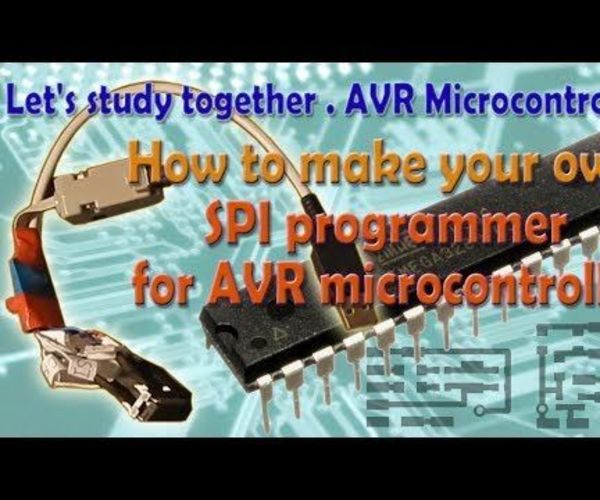
ISP Programmer for AVR Microcontrollers
"A microcontroller programmer is a hardware device accompanied with software which is used to transfer the machine language code to the microcontroller EEPROM from the PC. The compiler converts the code written in languages like assembly, C, java etc to machine language code and stores it in a hex file. A microcontroller programmer acts as an interface between the PC and the target controller. The API software of the programmer reads data from the hex file stored on the PC and feeds it into the controller’s memory. The software transfers the data from the PC to the hardware using serial, parallel or USB port. The micro controller, ATmega32 is programmed using the pins meant for SPI communication." [...]
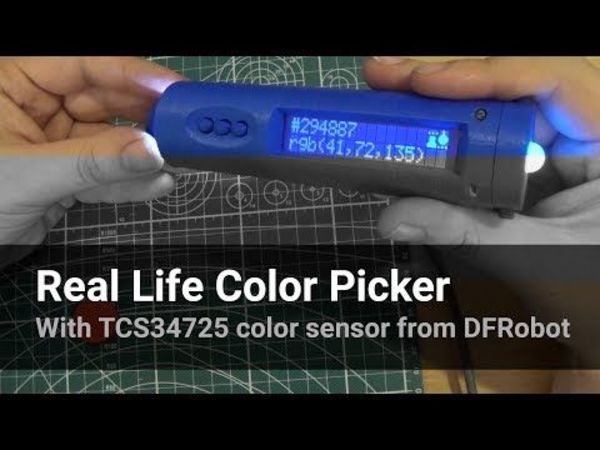
Arduino Color Picker
"Welcome to my instructable! The project I want to share with you today is Arduino Color Picker, a device that will let you pick any color from real life object(s) and display it in convenient way so you can use it for example in any drawing software, GUI web development and much more! " [...]
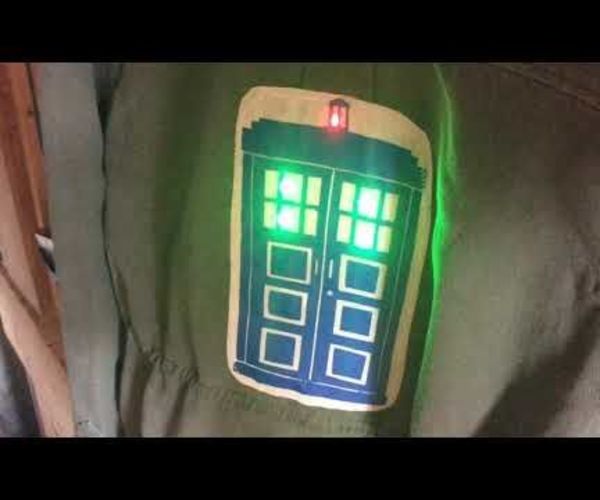
DIY Light-up TARDIS Patch Jacket
"While growing up in the 80s, I occasionally envied the cool, skater punk kids in their military surplus jackets, covered in safety-pins and angst-ridden, handmade patches. Now that I have reached an age where I'm expected to focus on the practical things in life, I've been itching to combine my love for wearable tech with a little nostalgia. Plus, a college student recently told me that DIY patches were sort of a "thing" again, which got me wondering. Could I create a TARDIS patch and then light it up, Doctor Who style? In this Instructable, I will show you a method for making your own light-up TARDIS patch jacket, by re-programming a LilyTiny or LilyTwinkle microcontroller (or other Arduino-based microcontroller), and adding in a few Adafruit NeoPixels. To see the jacket in action, you might want to view the video at the top." [...]
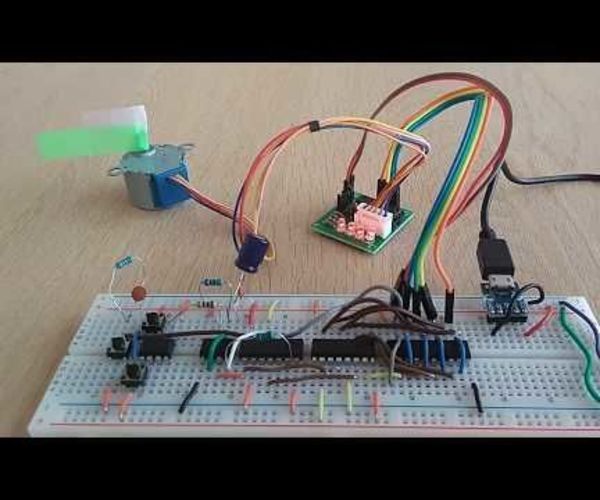
Driving a Stepper Motor Without a Microcontroller.
"In this Instructable, I will drive a 28-BYJ-48 step motor, with a UNL2003 darlington array board, sometimes named x113647, without a micro controller. It will have start/stop, forward/backward, and speed control. The motor is a uni-polar step motor with 2048 steps per revolution in full step mode. The datasheet for the motor is found at http://robocraft.ru/files/datasheet/28BYJ-48.pdf The two devices can be bought together from several vendors. I got mine from kjell.com Bing it or google it to find a vendor near you. I will first go through some steps and parts needed to get it running, and then add some steps and parts for some more control." [...]
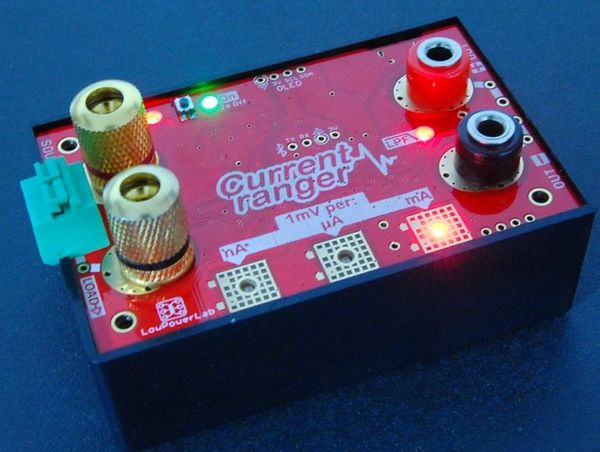
Current Ranger
"CurrentRanger is a nanoAmp current meter featuring auto-ranging, uni/bi-directional modes, bluetooth data logging options and more. It is a highly hackable and affordable ultra low-burden-voltage ammeter, appropriate for hobby and professional use where capturing fast current transients and measurement precision are important. Quick Highlights Here are some of the features of this instrument which sets it apart: - Low noise zero-offset with 3-ranges (1mV output per nA/µA/mA) - Low input burden voltage, high precision & bandwidth analog outputs - Increased flexibility and usability with several input and output terminal options - Auto-ranging capable - Use standalone with a small OLED display or with a multimeter/oscilloscope - Ultra fast range switching between any ranges (even nA to mA) without any glitching/bouncing of a mechanical switch - Low Pass Filter mode – very useful to capture low noise signals on oscilloscopes - Unidirectional mode – most used mode in measuring DC currents ranging from [0, 3.3A] - Bidirectional mode – split supply biasing allows AC currents measurement ranging from [-1.65A, 1.65A] - LiPo battery powered – long life and extended measurement range - Auto-power-off - Full digital control for power & range switching via touch pads - OLED display option to read output with usable precision - Datalogging possible via Bluetooth serial module - SAMD21 Cortex M0+ powered, change firmware to your needs - Optional buzzer for audible feedback" [...]

Clap-activated LED Array
"By the end of this instructable you will be able to build a device that listens to loud noises like claps and responds to them by turning on or off 3 LEDs. Above is an image of the final result. You will need: Arduino Uno Breadboard (see step 3) 4 Male-Male Jumper Wires 3 Male-Female Jumper Wires 3 LEDs 3 220 ohm resistors 1 KY-038 microphone sound sensor module You can purchase these parts online from various places - search around and you should be able to find these at a decent price. " [...]

How to make an RC airplane from a red bull)
"Red Bull gives you wings, but can you give Red Bull wings to fly RC? We have a passion for making strange things fly here at Flite Test. Last week, I challenged myself to make a Red Bull fly. Here's how I did it. " [...]
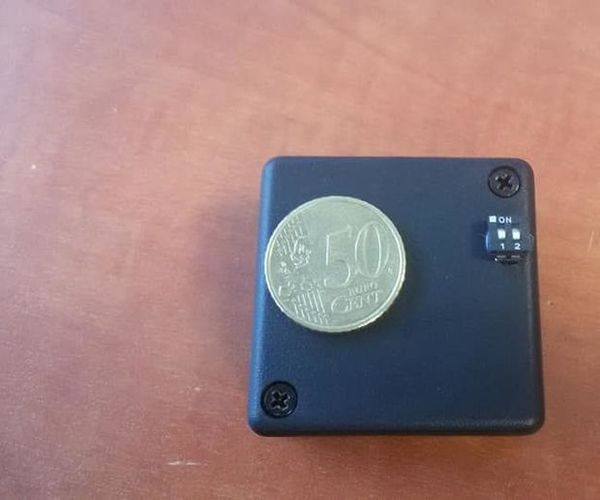
Water Leakage Sensor on ESP8266 + Micropython + Domoticz
"Some time ago, my wife asked me to make a water leakage sensor. She was afraid that the hose in the boiler room can be leaky, and the water would flood the newly laid wooden floor. And I as a true engineer undertook such a sensor to do. From my 15 years of experience as an medical engineer, I know that easiest way of detecting water is metal pins shorted by water. The principle of operation of the simplest sensors is that water has to short two (or more) metal pins, and as soon as it happens, alarm triggers. " [...]

Solar Powered ATtiny85
"The ATtiny85 is a tiny microcontroller (like the Arduino). This project is designed to provide continuous power to the circuit using a solar panel. A basic solar charging circuit uses a diode to basically "force" the electricity from the solar panel into a battery for later use. I am using an ATtiny instead of a larger board like the UNO because it use less power, so the circuit will be easier to power with a smaller (and cheaper) solar panel. " [...]
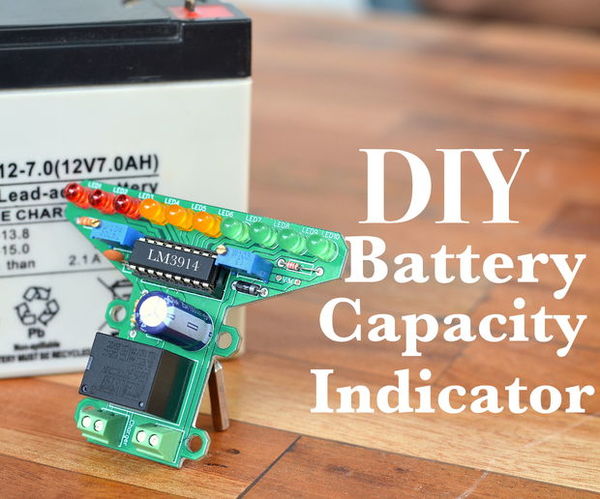
DIY Battery Level Indicator/Auto Cutoff for 12v Battery
"DIYers...We have all been through the situation when our high end chargers are busy charging those lithium polymer batteries but you still need to charge that 12v lead acid battery and the only charger you got is a blind one . Yes a blind one as it never know when its killing the battery by overcharging it. Same goes while discharging the battery as you have no idea what charge state it's at. Well I have got a solution for that situation as we are going to built a battery capacity level indicator by using a LM3914 IC and we are also going to add an important feature to our existing charger to cut off the charging current when the battery is fully charged. " [...]

FlowerCare and Nymea to Rescue My Plants
"Getting hands dirty on hooking up plant care sensors to my existing open source smart home. A walkthrough on plugin development for nymea. The storyAs many other tinkerers and hackers, I'm suffering too from the issue that hacking on things takes up so much of my time that I occasionally forget to water my plants. After my Monstera Deliciosa once again suffered from dry soil, I decided to see whether I can do something about it to remind me when it's thirsty. A quick research on the web brought my attention to the Xiaomi FlowerCare, also known as MiCare or PlantCare. It is a Bluetooth Low Energy device and some basic research revealed that its protocol seem to be quite easy to understand." [...]
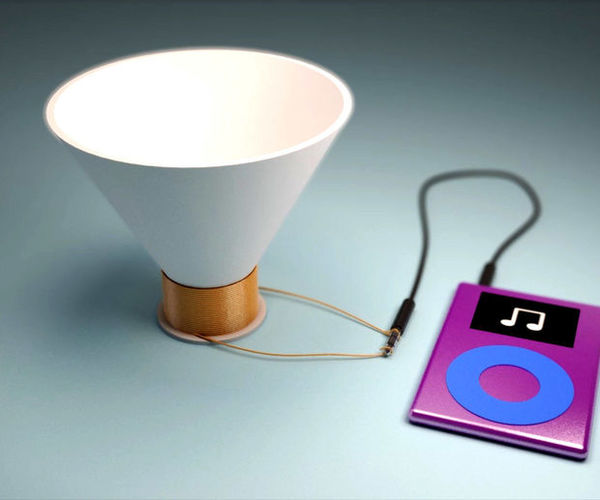
3D Printed Speaker That Works!
"When electricity flows through a coil of wire, it turns into a magnet, an electromagnet. That coil will now be attracted to the real magnets inside the cone. Your music device will send out unique intensities of electric current causing the right vibrations that will vibrate the cone, that vibrates the air, that vibrate your eardrum, that we interpret as sound! " [...]

Arduino: Using a Sound Sensor to Determine Ideal Audio Levels
"In this tutorial, you will learn how to use the Arduino Uno and several parts of circuitry as in order to create a simplified sound level reader, which utilizes multiple LED's to indicate the sound levels and whether or not the sound levels are too loud in certain areas. The final circuit will be relatively simple, with 1 green and 1 red LED, each to indicate whether a certain area is too loud, or just right, these will be attached to a breadboard which will also be attached to the sound sensor. The overall difficulty level of this tutorial is not very challenging, however there are certain parts of the tutorial where some problem solving skills may be required. In this tutorial you will learn the following skills- - How to control LED's - How to use the sound level sensor to set a threshold for an audio level - How to correctly create a circuit with 2 LED's and an analog input sound sensor - How to use the serial monitor The following code functions - - digitalWrite - pinMode - int - delay - if - else - analogRead - Serial.begin - Serial.println Required Materials- - KY-038 Sound Sensor or similar - Arduino Uno - 10 Dupont/Arduino Wires/Cables with male connectors on each end - 4 Dupont/Arduino Wries/Cables with 1 male and 1 female connector on each end - 1 Arduino 5mm Red LED - 1 Arduino 5mm Green LED - 2 220 ohm Arduino Resistors - 1 Mini Breadboard - 1 A-male to B-male USB Cable - Laptop or Computer with Arduino coding software installed" [...]

Autoscope
"This is fully 3d printed and remotely accessible telescope. it was mainly designed by open space agency under open hardware licence as ultrascope plus. i found it on there website . i made some changes in the design and fully designed my own controlling system for telescope. autoscope can be controlled through a website from anywhere around the world. it is an 6inch primary mirror telescope and parts are fully modular" [...]

Peltier Dehumidifier for 3D Printer Filament
"A dehumidifier for your 3D printing dry box to keep your filament dry without the need for desiccant. Overview After building this project you should have a fully functioning dehumidifier for your 3D printer dry box to keep your filament dry and ready to use. The dehumidifier works using a Peltier device which transfers heat from one side of the device to the other producing a hot and cold side. The cold side of the device produces condensation thereby removing moisture from the air within the dry box. The Peltier is sandwiched between two heat sinks in which a fan blows across. The fan provides cooling for the hot side of the Peltier while also blowing off built up condensation on the fins of the cold heat sink." [...]
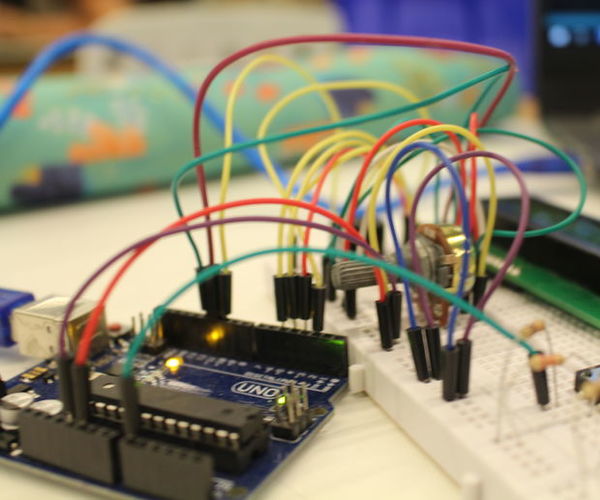
Alarm Clock
"Your dream is to create your own alarm clock? If the answer is yes, you are in the right place, because here I will show you step by step the easiest way, so that you can do it. Our project is based on the "Mundo Projetado" alarm clock. But my group and I made changes. If you want to take a look at the link I'll leave it here: http://mundoprojetado.com.br/despertador-usando-o-...." [...]

Arduino Shooter Game
"The project was born from the idea of making an arduino shooting laser game You will need the following components: -Arduino -4 servos -1 8x8 display -4 leds -4 photoresistors - resistances - wires" [...]

How to Make an Arduino Radar
"This is a radar, designed to detect the distance and direction an object is from the ultrasonic sensor. With the ultrasonic sensor connected to a servo, it has the ability to rotate 180 degress, similar to a radar utilised to detect the position of planes. As the radar wasn't my original idea, I have also made improvements and adjustments to the original source of this project. This includes 3D printing an ultrasonic sensor bracket, laser cutting a box to make it look cleaner, and the inclusion of a buzzer. The original inspiration for this project can be viewed here: https://www.youtube.com/watch?v=JvmIutmQd9U as it gave me a good understanding into what the end result was going to look like, but also gave me ideas on improvements I could make to the overall aesthetics of the project. " [...]
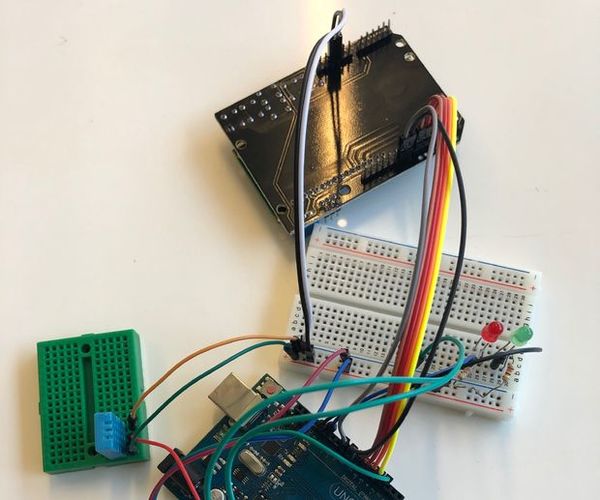
Life Saver
"The Life Saver is a product that helps to eliminate the problem of leaving your kids in the car and them getting heat stroke. The Life Saver is a product that displays the temperature on the lcd display and when the temperature is over 35 degrees celsius the light goes red and the buzzer makes a noise to notify people nearby. " [...]

The Incredible ESP32 Wrover From Espressif
"Today, I'm going to introduce you to the ESP32 Wrover Kit, which is model that is different than the ESP32 I usually use (the Wroom). Wrover is a development board that has many features and is quite peripheral. I will show you an example of a program with the ESP32 Wrover Kit that involves writing on the display and SD Card, as well as images. " [...]
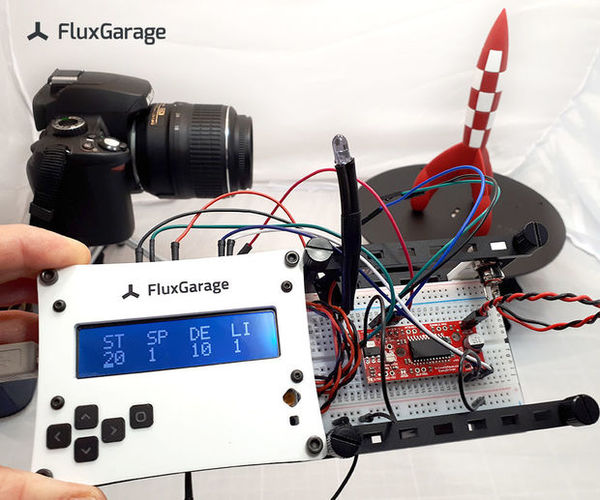
Arduino Controller for Automated 360 Product Photography
"Let's build an arduino based controller that controls a steppermotor and a camera shutter. Together with a steppermotor driven turntable, this is a powerful and low cost system for automated 360 product photography or photogrammetry. The automatic camera shutter is based on a great library from Sebastian Setz and works for infrared triggered cameras of Nikon, Canon, Minolta, Olympus, Pentax, Sony. I've prepared two versions of the controller: A basic version that is operated with a simple pushbutton and a status led. An advanced version that uses a 16x2 LCD + keypad shield and thus has a menu to change the variables on the fly and not only in the sourcecode.What does the controller do? If you trigger a photoshooting by pushing the button, the turntable performs a full revolution, divided into a predefined amount of steps." [...]
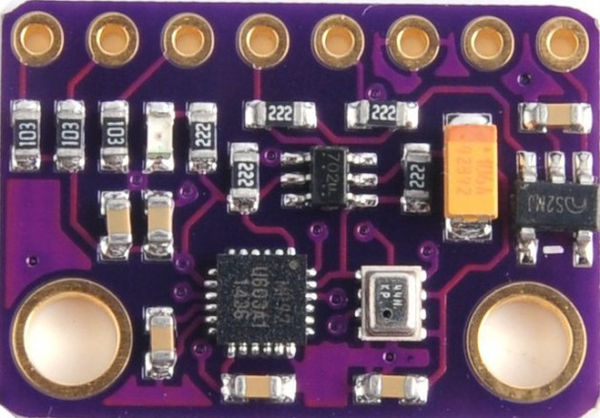
Calibrate a magnetic sensor
"I recently worked on a project that required a magnetic sensor (MPU-9250) be calibrated to get best accuracy. I had some basic understanding on how to calibrate a magnetic sensor, although I’ve not done calibration before. The calibration turned out to be a bit complicated and took a while to understand. I got some help, including method to get best calibration, from the author of the MPU9250 Arduino library, Kris Winer. I thought that if I shared my experience here, others that are planning to calibrate their magnetic sensors may find it useful. First of all, what is calibration?" [...]
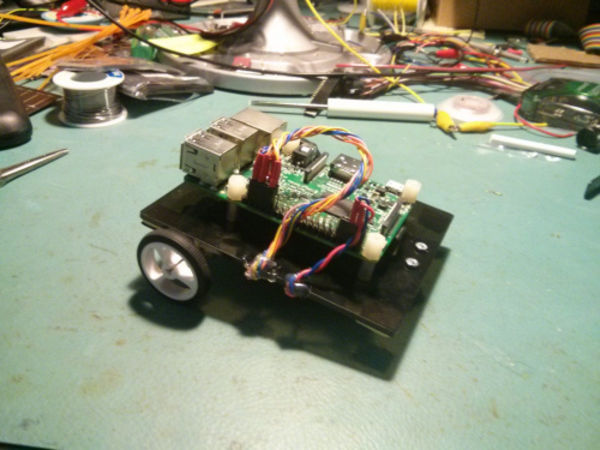
Hackbot in the Morning
"Pretty quiet around here at 7 a.m. Maybe I can whip up a quick python-fueled, Pi-based bot? Oh, yeah - hot glue features prominently in this build. I love coming in to work early; normally I get in around 6:45 a.m. Very few people are here at that time, and the ones that are? They get it. It’s about as close to freedom a working adult can expect." [...]

NE555 ON OFF Touch Switch Circuit
"Touch Switch Circuit In this project guide, we’re building barely Switch Circuit mistreatment NE 555 IC. As you recognize, NE/SE 555 could be an extremely popular timer IC with multiple applications in several comes. barely switch is essentially an easy shift circuit activated upon barely. If you’re new 555 IC, please take time to browse our beginners orient 555 IC. Also, you’ll strive several of our applications mistreatment 555 timer IC" [...]
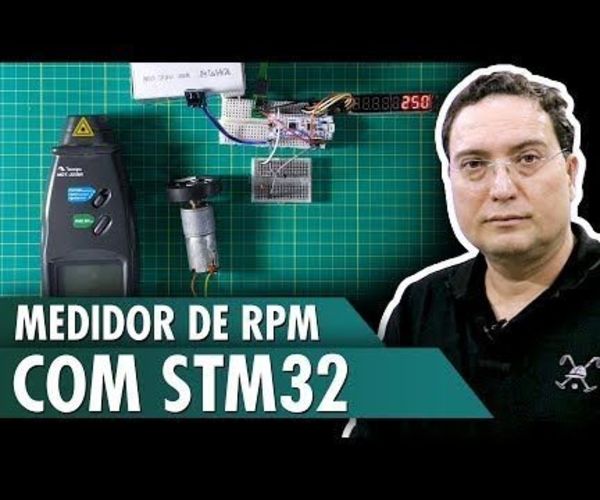
RPM Meter With STM32
"Although it is somewhat of a nuisance to buy (because it is not available in many internet stores), I find it necessary to discuss STM32 L432KC. This chip deserves special affection, as it is ULTRA LOW POWER. However, for those who do not own the STM32, it can be replaced in this project by the Arduino Uno. To do this, simply change the pin of the Interrupt input. Let's then create an RPM meter using the STM32 L432KC and an infrared sensor. This same program can also be used to measure wind speed." [...]
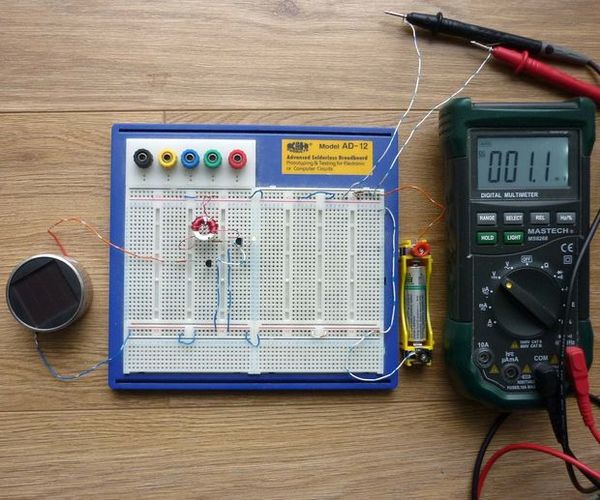
How to Switch Off a Joule Thief During Daylight
"The battery life of a Joule Thief circuit can be drastically increased if the device is switched off during daylight. This Instructable shows an extremely simple way of doing it. " [...]
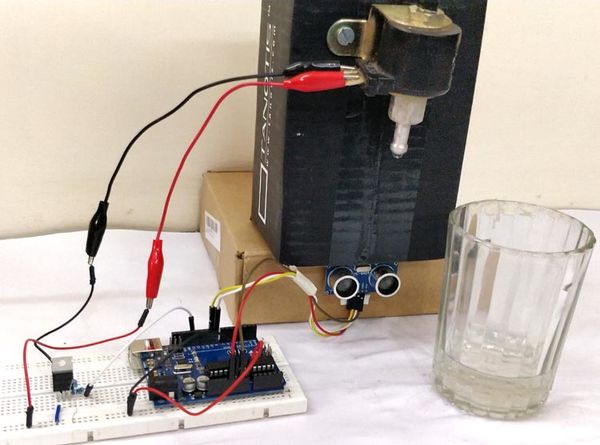
Automatic Arduino Water Dispenser
"About 71% of earth is covered with water, but sadly only 2.5% of it is drinking water. With rise in population, pollution and climate change, it is expected that by as soon as 2025 we will experience perennial water shortages. At one hand there are already minor disputes among nations and states for sharing river water on the other hand we as humans waste a lot of drinking water due to our negligence. It might not appear big at the first time, but if your tap dripped a drop of water once every second it would take only about five hours for you to waste one gallon of water, that is enough water for an average human to survive for two days. So what can be done to stop this? As always the answer, for this, lies with improvement in technology." [...]

PUZZLE - Arduino Logic Game
"Hello. I would like to tell you about the history of creating a simple puzzle game "Puzzle" using Arduino UNO and TFT-Shield. To create the game I needed the following components: Arduino UNOPower Adapter (AC-DC) 6-12V for Arduino UNO MicroSD card TFT Shield" [...]

Improved WeatherStation 20x4
"Temperature, humidity and barometric pressure showing a comparison to a previous point in time and graphing the trend. Story I wanted to get more meaningful information from a basic temperature, humidity and pressure setup and I figured the way to do that was to have data that could be compared to a previous point in time. This is especially true for barometric pressure since whether it is rising or falling is far more useful than just knowing the current pressure alone. The hardware I used is listed above and it's all connected in a standard way. I won't be getting into obtaining basic data from the sensors and sending it to an LCD, I'll assume you're past that point. This is more of a code example than a hardware tutorial." [...]

Measuring True-RMS AC Voltage
"Today, we will use the STM32 Maple Mini to do an AC reading. In our example, well get the RMS value of the power grid. This is very useful for those who want to monitor the electrical network for the Internet of Things. We will then create an application using the computational power of the Maple Mini, apply an electronic circuit capable of allowing the acquisition of a 127Vac signal, as well as apply the root mean square (RMS) calculation on the samples. " [...]
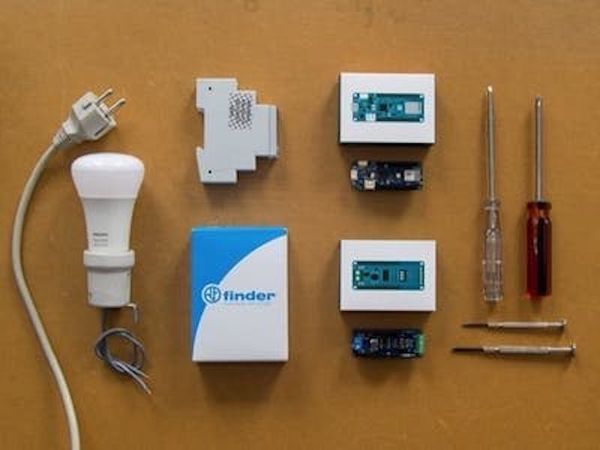
Monitor Your Energy Bills via Modbus
"Connect a Modbus energy meter to an Arduino and monitor power consumption via Home Assistant. Story If you really want to make your home smarter, you'll probably want start from your monthly bills (i.e. energy, gas, etc...). As some say, Good for Planet, The Wallet and The Bottom Line. Open Source Hardware is our way to reach sustainability in the home environment! This idea brought us to build a simple and secure solution, easy to integrate with any home automation software since it exposes data over MQTT (in our case we will show you how to integrate it into Home Assistant)." [...]

Portable Soldering Iron V3
"Finally, the board works perfect. So I could make a 3D design for the case and this is a final product that could end up on Kickstarter. It is a very cheap project, around 15$ for all the parts . On this tutorial you willhave a full part list, the schematic and layout of the board in case you want to amke it. I also share the 3D STL files for the case so you could print it. " [...]
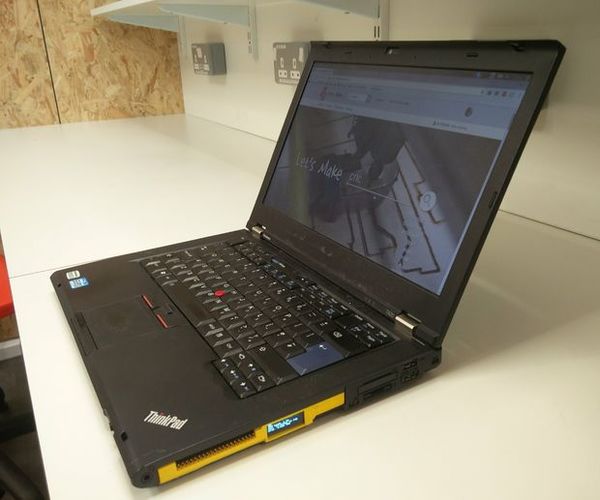
Repurpose Optical Drive With RPi
"This project came about after my beloved laptop's optical drive started to misbehave. The CD tray would repeatedly pop out whenever I gave my laptop a push or moved it about in any way. My diagnosis of the problem was that there must have been some loose connection which was tripping the eject switch whenever it was moved about. This became more and more irritating and finally, I decided to do something about it. I had only once used the optical drive in the 2 years of having my laptop so I thought I could probably do without it altogether. Removing the tray meant I had a large hole in the side of my computer so I needed to fill it with something." [...]
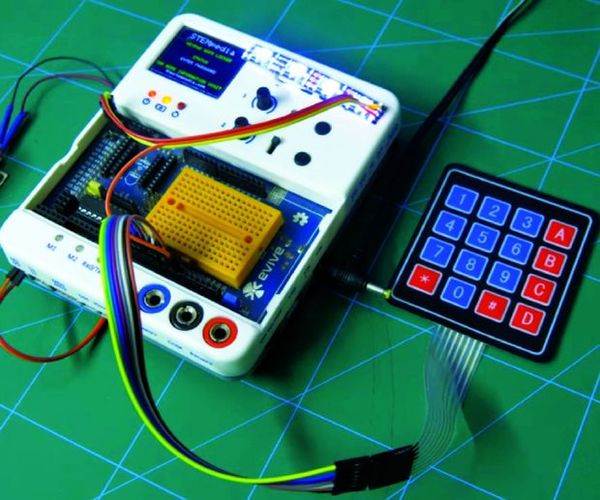
Password Protected Door Locking System
"Time to cast all your worries about the safety of your home, your workplace, and any of your other go-to place to chill, away! Presenting to you the DIY Password-Based Door Lock! A simple yet effective means to safeguard your home and office by preventing others from entering your room without the correct password. Lie back and relax for your abode and workplace are now protected from attempted break-ins with this easy-to-make DIY security mechanism. Want to know how to make one for yourself? Then jump aboard!" [...]
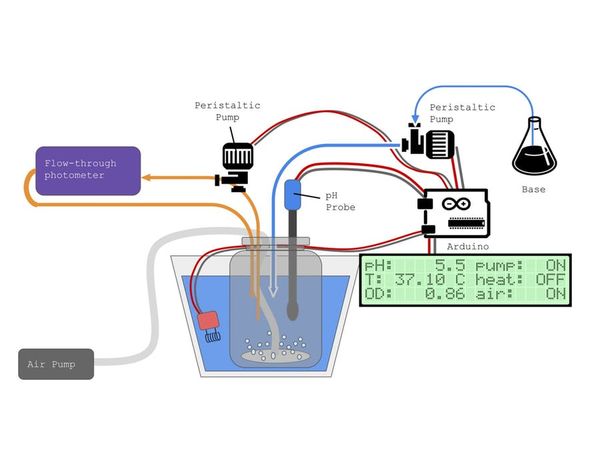
Microbial Bioreactor
"An open microbial bioreactor for growing cultures of about 1L. Story We are building an open source, benchtop, batch bioreactor to optimise yield of enzymes producing recombinant proteins for molecular biology such as Taq polymerase or for cell-free extract production. This built on existing open source projects to further reduce the cost of components and pay particular attention to their global accessibility. By generating a modular design with thorough and useful documentation of different options to suit budget and accuracy requirements, we will make these devices easier to build and maintain for a wider range of users in universities, companies and biomaker spaces: in particular those in resource-constrained contexts. " [...]
That's all Folks!


